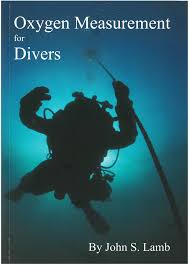 Sadly, much of our information about oxygen sensors has been born on Internet chat forums. A lot of that banter is simple anecdotal evidence as opposed to scientific fact. Thankfully, owner of Vandagraph Ltd. in the UK, John Lamb has released his 2nd Edition of “Oxygen Measurement for Divers.” It might not be your idea of a book to curl up with in front of a fire, but it is one of the best investments you can make as a rebreather diver or owner of an oxygen analyzer. Lamb carefully breaks down the measurement of oxygen into abundantly illustrated chapters covering everything from gas laws to blending methods. He dispels some of the misinformation about sensor life and current limitation behavior and offers best management practices for storage and use of common sensors. He reveals the Achilles Heels of sensors and describes future technologies that will improve the measurement of gases in the future. If you want to break through the mire of misinformation and be better informed about diving safety, this is a must-read book.
Sadly, much of our information about oxygen sensors has been born on Internet chat forums. A lot of that banter is simple anecdotal evidence as opposed to scientific fact. Thankfully, owner of Vandagraph Ltd. in the UK, John Lamb has released his 2nd Edition of “Oxygen Measurement for Divers.” It might not be your idea of a book to curl up with in front of a fire, but it is one of the best investments you can make as a rebreather diver or owner of an oxygen analyzer. Lamb carefully breaks down the measurement of oxygen into abundantly illustrated chapters covering everything from gas laws to blending methods. He dispels some of the misinformation about sensor life and current limitation behavior and offers best management practices for storage and use of common sensors. He reveals the Achilles Heels of sensors and describes future technologies that will improve the measurement of gases in the future. If you want to break through the mire of misinformation and be better informed about diving safety, this is a must-read book.
One of the most important safety practices that Lamb suggests is to replace sensors 12-18 months after manufacture (not after their first use). He describes the normal expected life of a sensor is about 9-10 months in pure oxygen at the surface. He notes that single failure rates are low and multiple failures are rare when these parameters are adhered to. He also advises that correct storage procedures must be adhered to. In his examination of sensors, he believes that temperature is the main cause of early sensor failure. For most divers this means that sensors should be replaced every dive season. For me, that means putting a simple alert in my iPhone Calendar. It is a simple act that can ensure that you are reading accurate PO2 in your rebreather.
